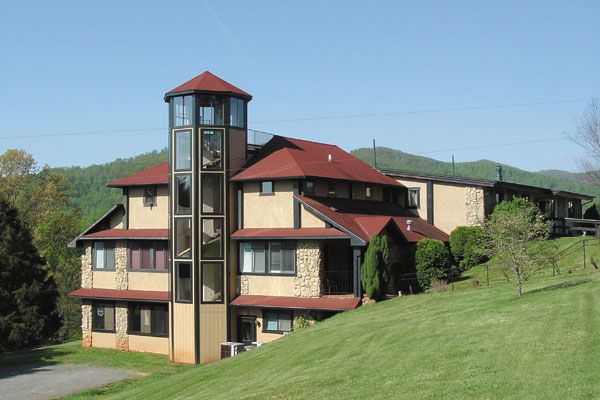About
Robert Monroe, founder of The Monroe Institute, would be the last kind of person you would expect to create a school for ″expanding human consciousness.″ He was a New York broadcasting executive for the Mutual Broadcasting System network, and was responsible for creating successful radio shows in the '50s.
In 1956 the firm set up a research and development division to study the effects of various sound patterns on human consciousness, including the feasibility of learning during sleep. Monroe often used himself as a test subject for this research. In 1958 he experienced a startling result. Monroe began experiencing a state of consciousness separate and apart from his physical body. He described the state as an "out-of-body experience," the term popularized by Charles T. Tart, Ph.D, known as the father of modern parapsychology. These spontaneous experiences altered the course of Monroe's life and the direction of his professional efforts.
While continuing his broadcasting activities, Monroe began to experiment with and research the expanded forms of human consciousness that he was experiencing. His own research and experimentation culminated in his first book, Journeys Out of Body. He would release two more books and file a patent for hemispheric synchronization (″Hemi-Sync″), a technology consisting of blended and sequenced binaural beats and other sounds designed to lead listeners into specific targeted states of consciousness not typically available during the waking state.
Monroe died in 1995, but his legacy still stands in the form of the Monroe Institute, a nonprofit research and educational organization. Located in the secluded mountains of Faber, Virginia, the institute seems to be more of a new-age retreat than a scientific institute. For about $1,995 (including meals and lodging for the week), people come from around the world to enroll in one of the Monroe Institute's many 6-day or weekend-long programs, which include esoteric themes such as ″Gateway Voyage″ (The institute's premier foundational program), ″Remote Viewing,″ ″Guidelines″ (connecting with personal guidance), ″Lifeline" (rescue and retrieval), and many more.
During the program, participants rest in controlled holistic environmental chambers (CHEC units), each of which is basically a bed in a cubicle wired for light and sound, with blackout curtains to block outside light, and headphones through which are heard Hemi-Sync sounds and calm verbal guidance, sometimes recorded by Robert Monroe himself. Each course is guided by the institute's ″Trainers″ who explain the process and gather everyone after class to discuss what they experienced. Participants of these classes claim to have had out-of-body experiences, a new awareness of the world they didn't have previously, and acquired personal revelations.
Related Tags
Know Before You Go
From Washington, DC (or points North) Take 495 Beltway to 66 West. Take US 29 South at the Gainesville exit. Pass Warrenton, Culpepper, to Charlottesville, taking RIGHT exit onto Rt. 29 (South to Lynchburg). In approx. 24 miles, turn RIGHT onto State Rt. 6 West (Tidbit to River Road) and go approx. 2 miles. Turn LEFT onto Rt. 634 (Adial Road) where there is a white church sign with a cross on the top. Go approx. 3/4 mile on Adial Road, then turn LEFT onto Rt. 613 (Rocky Road) and go approx. 2/10 of a mile. Take the second RIGHT Roberts Mountain Road and look for The Monroe Institute. From Charlottesville, VA Take 29 South for approx. 24 miles, turn RIGHT onto State Rt. 6 West (Tidbit to River Road) and go approx. 2 miles. Turn LEFT onto Rt. 634 (Adial Road). Go approx. 3/4 mile on Adial Rd., then turn LEFT onto Rt. 613 (Rocky Road) and go approx. 2/10 of a mile. Take the second RIGHT Roberts Mountain Road, look for The Monroe Institute Sign. from Richmond, VA Take Interstate 64 West to Charlottesville and then get off at exit for Lynchburg (South) on Rt. 29. Drive on Rt. 29 south for approx. 24 miles, turn RIGHT onto State Rt. 6 West (Tidbit to River Road) and go approx. 2 miles. Turn LEFT onto Rt. 634 (Adial Road). Go approx. 3/4 mile on Adial Rd., then turn LEFT onto Rt. 613 (Rocky Road) and go approx. 2/10 of a mile. Take the second RIGHT Roberts Mountain Road and look for The Monroe Institute sign. From Waynesboro or Staunton, VA (or from Interstate 81) From Interstate 81, take Interstate 64 East and get off at Exit 99 on top of Afton Mt. At the end of the exit ramp, turn RIGHT onto Rt. 250 East (toward Charlottesville) and go down the mountain approx. 3.5 miles. At the bottom (on the left is the Rockfish Country Store), turn RIGHT onto Rt. 151 South (Critzers Shop Road which becomes Rockfish Valley Turnpike) and go approx. 8.7 miles. Turn LEFT onto Rt. 6 or River Road (electric substation on right) and go approx. 3.7 miles. Turn RIGHT onto Rt. 634 (Adial Road) and go approx. 3/4 mile, then turn LEFT onto Rt. 613 (Rocky Road) and go approx. 2/10 of a mile. Take the second RIGHT Roberts Mountain Road look for The Monroe Institute. From Lynchburg, VA Take Rt. 29 North for approx. 39 miles (7 miles past Lovingston), turn LEFT onto State Rt. 6 West (River Road) and go approx. 2 miles. Turn LEFT onto Rt. 634 (Adial Road) where there is a white church sign with a cross on the top). Go approx. 3/4 mile, then turn LEFT onto Rt. 613 (Rocky Road) and go approx. 2/10 of a mile. Take the second RIGHT Roberts Mountain Road and look for The Monroe Institute sign.
Published
January 24, 2013



































